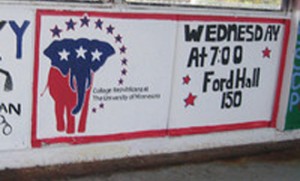Unimaginable until the twentieth century, the clinical practice of transferring eggs and sperm from one person’s body to another individual’s body is now the basis of a multi-billion dollar fertility industry. But who provides the eggs and sperm, and how do they think about their involvement? To find out, I combined historical and statistical evidence with interviews of staff and donors at egg agencies and sperm banks. My findings highlight the role of gendered stereotypes in the day-to-day operations of the fertility business. Different rules apply to male and female donors, who experience the transactions very differently.
How Egg Agencies and Sperm Banks Do Business
Egg agencies and sperm banks recruit donors to give marketable reproductive cells. Most donors are motivated by the money, but the transactions are portrayed in highly gendered terms. Drawing on the stereotype of women as nurturing caregivers, egg agencies emphasize the plight of infertile couples in selecting women who want to “help” people by giving the “gift of life.” In contrast, sperm banks encourage men to earn money for an easy “job.” As one cheeky ad puts it: “get paid for what you’re already doing!”
America’s largest egg agencies and sperm banks receive hundreds of applications every month, so they can be picky. Medical evaluations are required for all potential donors, including a family health history going back three generations. Beyond that, gendered rules apply:
- Egg donors must conform to rigorous height/weight ratios; sperm donors do not have to meet this standard, but must be at least 5’8” tall.
- Women over thirty are unlikely to be accepted, but men can donate until they are forty.
- Fertility businesses require men (but not women) to be enrolled in college or have a degree.
- Most egg agencies require psychological assessments of how women feel about having biological children raised by others, but sperm banks do not require such discussions.
What Donors Do and Earn
Once accepted, egg donors and sperm donors create profiles to be posted in “donor catalogs” onprogram websites. To attract potential clients, fertility businesses strive for donor diversity along lines of race and ethnicity, religion, and even donor hobbies. Staffers complain about the difficulty of recruiting African Americans and Asian Americans, so such donors are considered particularly valuable. In a given sperm bank, all men are paid the same rate, usually around $75 or $100 per deposit. In contrast, some egg agencies will adjust a donor’s compensation based on her personal characteristics, including race. African American and Asian American egg donors can be paid a few thousand dollars more than whites. Fertility businesses will pay African American and Asian American female donors more than whites because of their desired characteristics.Egg donors must inject themselves with powerful fertility medications for several weeks before undergoing outpatient surgery. Sperm donors have an easier time, but many people do not realize that they are usually required to donate once a week for at least a year. Screening donors is costly, so sperm banks have to make sure that men produce enough samples to cover costs. Yet neither biology nor technology explains why producing eggs for money is framed as a gift, while selling sperm is called a job.
How Men and Women Understand Their Donations
My interviews reveal that the language used by fertility businesses amounts to more than empty rhetoric; it shapes how men and women understand the exchange of sex cells for money.

- Egg agencies are constantly thanking women for the wonderful difference they are making in the lives of recipients – so egg donors speak with a great deal of pride about helping people have children. Some egg donors even described the money they received as a “gift” for the gift they had given.
- Sperm banks treat men more like employees who are expected to clock in on a regular basis – and sperm donors respond by calling the money “income” or “wages.” Tellingly, several sperm donors said they felt like “assets” or “resources” for the sperm bank. Egg donors did not use that sort of language, even though they are making much more money.
One of my most surprising findings is how donors think of their parental contributions. Sperm donors have a straightforward view of themselves as fathers, while egg donors insist they are not mothers! This is the opposite of what many might expect, given the “job” versus “gift” framings, plus the simple fact that women and men each provide half the genetic material for an embryo.
Different understandings of biological offspring make sense when we recall the emphasis egg agencies place on the ultimate recipients. Egg donors consider the recipient to be the “real mother,” because she is the one who will carry the pregnancy, give birth, and raise the child. Especially with modern technology, maternity is more easily separated into distinct tasks. The woman who provides the egg, the woman who carries the pregnancy, and the woman (or women) who rears the child – all can lay claim (or not) to the label of “mother.” Fatherhood is more often reduced to an equation in which sperm equals dad. Sperm donors, moreover, are not encouraged to think about the people who use their donations to become parents.
“How does it feel to have children running around out there?” Donors are often asked this question, and the responses from men and women are influenced not only by the sales pitches of fertility businesses, but also by longstanding cultural traditions. The ancient Greeks thought of men as providing the generative seed and women the nurturing soil, so they would recognize the messages spread by contemporary fertility businesses. Sperm donors think of their seed as essential, but downplay the role of the recipients in conceiving, gestating, and rearing the baby. Egg donors do just the opposite. Today’s donors and recipients of eggs and sperm are, in short, building on very old stereotypes to craft new definitions of motherhood, fatherhood, and family.



 Research to Improve Policy: The Scholars Strategy Network seeks to improve public policy and strengthen democracy by organizing scholars working in America's colleges and universities. SSN's founding director is Theda Skocpol, Victor S. Thomas Professor of Government and Sociology at Harvard University.
Research to Improve Policy: The Scholars Strategy Network seeks to improve public policy and strengthen democracy by organizing scholars working in America's colleges and universities. SSN's founding director is Theda Skocpol, Victor S. Thomas Professor of Government and Sociology at Harvard University.